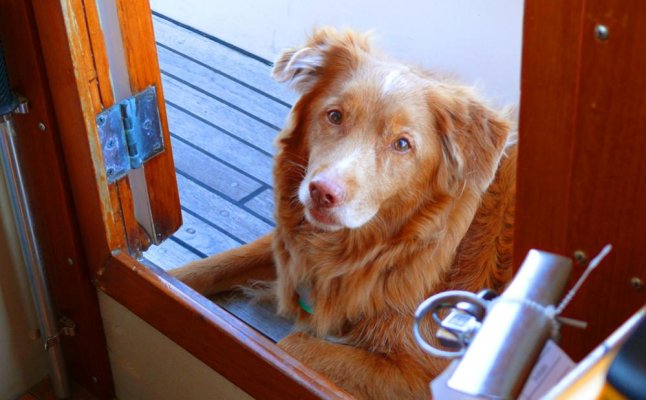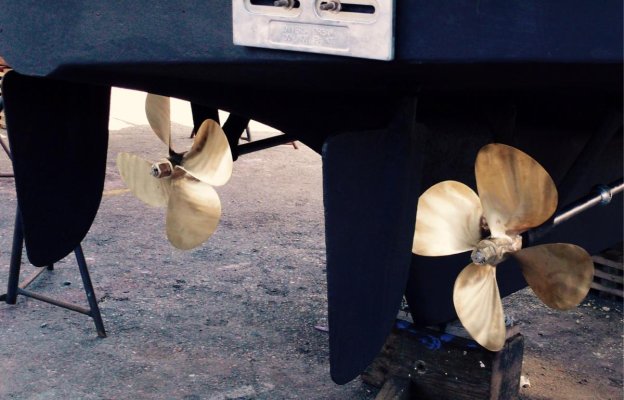Real world you're probably going to approach the dock at minimal speed, with a bow "in" angle and then reverse the outside engine, maybe a little forward thrust with the other, to move the stern to the dock as you come to a stop.
The above description is how it works (and how we do it) with a boat with counter-rotating props with the port prop being a right-hand prop and the starboard prop being a left-hand prop
In the case of a final approach and docking to a starboard tie, with the outside (port) prop turning in reverse and the inside (starboard) prop turning in forward, both props will be turning clockwise so the combined propwalk will move the stern to starboard (toward the dock).
Putting the rudders over away from the dock (helm wheel in a port turn) the forward thrust of the inboard (starboard) prop against the rudder will add to the propwalk to move the stern even faster to starboard.
(Of course the bow will move to port when you do this because a boat pivots somewhere along its length, so you want to be pretty close to the dock when you initiate this or you'll end up with your stern against the dock and the bow drifting out away from it.)
If the approach and docking is a port tie, then the above control positions are reversed.
The fellow who first taught me to maneuver a twin engine boat gave me a great analogy which helped me remember how to manipulate the shifter levers to get the desired movement of the stern until it became second nature and I didn't need the analogy anymore.
He asked me if I'd ever driven an old-fashioned bulldozer (with lever controls for each tread, not a single joystick). I had so he said to imagine the boat the same way. With both treads shifted to forward, the tractor goes forward. With one tread shifted to neutral and the other in forward, the bulldozer makes an easy turn toward the unpowered tread. With one tread in forward and the other tread in reverse, the tractor pivots toward the tread that's in reverse.
So, he said, think of the shift levers as the tread controls and your butt as the back end of the tractor (boat).
My wife was taught a slightly different analogy, one that is probably even easier to envision. With her arms clamped tight against her sides and angled forward at the elbows, pushing her right arm forward twists her body to the left and her butt pivots to the right. If she pushes her left arm forward, her body twists to the right and her butt pivots to the left.
If she pushes one arm forward and pulls the other arm back her body
really twists toward the arm coming back while her butt pivots a lot more toward the arm moving forward.
The boat reacts exactly the same way.
This is why a bow thruster is a great tool if you have one because it's the
only way, single or twin, that you can move the bow straight sideways one direction or the other and leave the stern exactly where it is. We don't have a bow thruster and have gotten along okay without one, but there have been times when the ability to move the bow but leave the stern right where it was would have made things easier and faster.


 . When you get it figured out on your boat in ideal conditions then you'll be able to get the wind and current problem solved to...just takes practice.
. When you get it figured out on your boat in ideal conditions then you'll be able to get the wind and current problem solved to...just takes practice.
